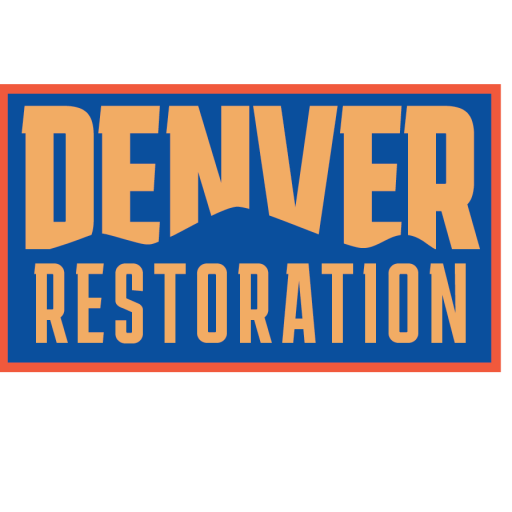Addressing the Immediate Aftermath of Flooding
The sudden occurrence of a flood leaves many property owners in a state of shock, the magnitude of disaster often overwhelming. One of the main concerns in such a situation is restoring the property to a hygienic environment. However, the post-flooding restoration process is a complicated one that requires careful planning and execution.
Understanding the Risks
Understanding the risks associated with flood damage is critical. These risks are not just structural but also health-related. Flood water often contains hazardous materials, such as bacteria, viruses, and other harmful pathogens. If ignored, these can lead to serious health issues. Moreover, the damp environment post-flooding is a perfect breeding ground for mold, further adding to health risks. For these reasons, it is crucial to undertake comprehensive flood cleanup process.
Comprehensive Post-Flooding Steps for Restoration
Undertaking a comprehensive restoration process ensures that your property gets back to normal as soon as possible. More importantly, it ensures a safe and hygienic environment for its occupants.
Immediate Damage Assessment & Estimation
The first step in the post-flooding process is to assess the extent of the damage. A comprehensive damage assessment helps in understanding the magnitude of the situation. Furthermore, it aids in accurate estimation of the restoration work that would be needed. Our comprehensive guide can help you better understand the process of insurance claims and processing after water damage.
Restoration Techniques and Equipment
With advancements in technology, there are various sophisticated restoration techniques and equipment available that expedite the flood cleanup process. It is crucial to employ the right methods and tools that align the requirements of your property.
Flood Cleanup – Ensuring a Hygienic Environment
The primary objective of flood cleanup is to restore the property to pre-damage conditions. However, achieving a truly hygienic environment requires careful attention to detail. This extends to disinfection, dehumidification, and a thorough cleaning of each affected area.
Mold Remediation
Post-flooding, the growth of mold is a common occurrence. If not addressed in time, mold can lead to serious health issues. Professional mold removal techniques ensure that the mold is completely eradicated, and preventive measures are put in place to avoid future occurrences.
Insurance and Legal Compliance
Property damage due to flooding often leads to significant financial strain. Thus, understanding your insurance coverage and ensuring fair claim processing is essential. At the same time, all restoration work should adhere to the local laws or regulations, ensuring compliance.
Customer Communication and Crisis Management
Post-flood scenario can be quite stressful. However, open communication with the restoration team can ease some of this stress. By knowing the progress of the restoration work, one can plan accordingly. Additionally, trained restoration professionals are equipped to handle various crisis situations that may arise during the process.
Remember, the key to successful flood restoration is immediate action. With timely implementation of crucial post-flooding steps, you can ensure a safe and hygienic environment for your property. For more on this, refer to the EPA guidelines on flood cleanup and indoor air protection.
Future Preparedness – Make a Plan
Floods can happen anytime, anywhere. Preparedness is key in reducing the impact of such disastrous events. Explore some effective measures in our post on secure and discrete cleanup services. By creating a well-thought-out plan, you can ensure minimal disruption to your day-to-day activities and safeguard your property at the same time.
Just as each flood is unique, so is each restoration process. Hence, it is essential to find a service that suits your specific needs and ensures a hygienic environment post-flooding.
Preventive Action for Property Protection
Preemptive measures can be invaluable in both reducing the risk of floods and minimizing the damage if a flood occurs. These precautions can include the construction of barriers on your property, installing a basement sump pump, moving valuable assets higher and regular maintenance checks of your plumbing systems. For an in-depth understanding of these preventive measures, you can refer to our pro-tips on handling fire damage as many are applicable to water damage too.
Structural Safety Checks
Even after the floodwaters recede, numerous unseen dangers might persist. Extreme caution should be exercised when reentering your property. Structural damage assessment is critical to ensure that the building is safe to occupy. Any noticeable shifts in the building’s structure, bulging walls, or cracks in the foundation indicate a severe problem. If such issues arise, seeking a professional assessment is recommended.
The Role of Professionals in the Restoration Process
Restoration, particularly in the aftermath of extensive flooding, can seem daunting. Handling it without professional assistance can not only exacerbate the problem but can also pose health and safety risks. Hiring a professional restoration company offers numerous benefits.
An End-to-End Cleanup Solution
Professional restoration companies offer a complete package, from damage assessment to restoration and even dealing with insurance companies. This expertise ensures a comprehensive plan designed to restore your property safely and efficiently. For more insights on damage assessment, refer to our article on the role of Damage Assessment.
Expertise and Advanced Equipment
The seasoned expertise of restoration professionals along with the use of specialized equipment ensures quick and effective cleanup. They have access to advanced restoration techniques and equipment designed to deal with water extraction, drying, dehumidification, mold remediation, and Indoor Air Quality (IAQ) solutions.
Health Risks Mitigation
Professional water damage restoration takes into account not just the visible damage, but also unseen threats such as bacteria, viruses, and mold that can drastically affect the Indoor Air Quality. So, restoration companies don’t just clean your property but also sanitize it, dramatically reducing potential health hazards. For more information on maintaining five-star IAQ and reducing health risks, visit TN Health Department’s guide on cleaning up after a flood.
The Importance of Hiring a Reputable Restoration Service
Water damage restoration is a large field, and not every service provider will be equal in terms of skill, equipment, or experience. It’s essential to do your research and select a reputable company. Seek out professionals who demonstrate transparent communication, offer round-the-clock emergency services, possess industry accreditations, and come recommended with positive client testimonials. Such professionals are equipped to deal effectively with the complexities of restoration and insurance processes, environmental and health safety requirements, and crisis management.
The Road to Recovery
Experiencing flooding and the subsequent water damage can be an emotionally exhausting ordeal. Yet, with a systematic approach to restoration and professional guidance, recovery is entirely achievable. By following health department guidelines, engaging with professional restoration services, and implementing proactive measures, the road to recovery from flood damage can be significantly smoother and stress-free.
Lessons from the Aftermath
Restoring a property post-flooding is more than just repairing surfaces and structures. It offers a chance to implement or enhance preventive measures and stringent maintenance protocols to advance property resilience against similar future disasters. Access a comprehensive guide to mold resilience here.
Measures for Long-term Preparedness
Long-term preparedness strategies involve regular maintenance and inspection schedules, including checking roofs for leaks, inspecting HVAC for potential issues, maintaining plumbing systems, and ensuring sump pumps are functional. Homeowners can also install alerts for water leaks, flood warnings, and basement-water-level monitors.
Flood events, though disruptive and damaging, can provide valuable learning opportunities for property owners. By taking the necessary steps towards restoration and prevention, the challenges of recovering from a flood can be managed effectively. Ultimately, this is more than a restoration process—it’s an opportunity for enhancement and future preparedness. By taking these principles to heart, you can safeguard your property, ensuring it can weather future flood events.
In all things, from taking initial preventive measures to post-flood property restoration, knowledge is strength. It is the key to transforming a potentially overwhelming situation, like the aftermath of a flood, into an opportunity for growth and resilience.

